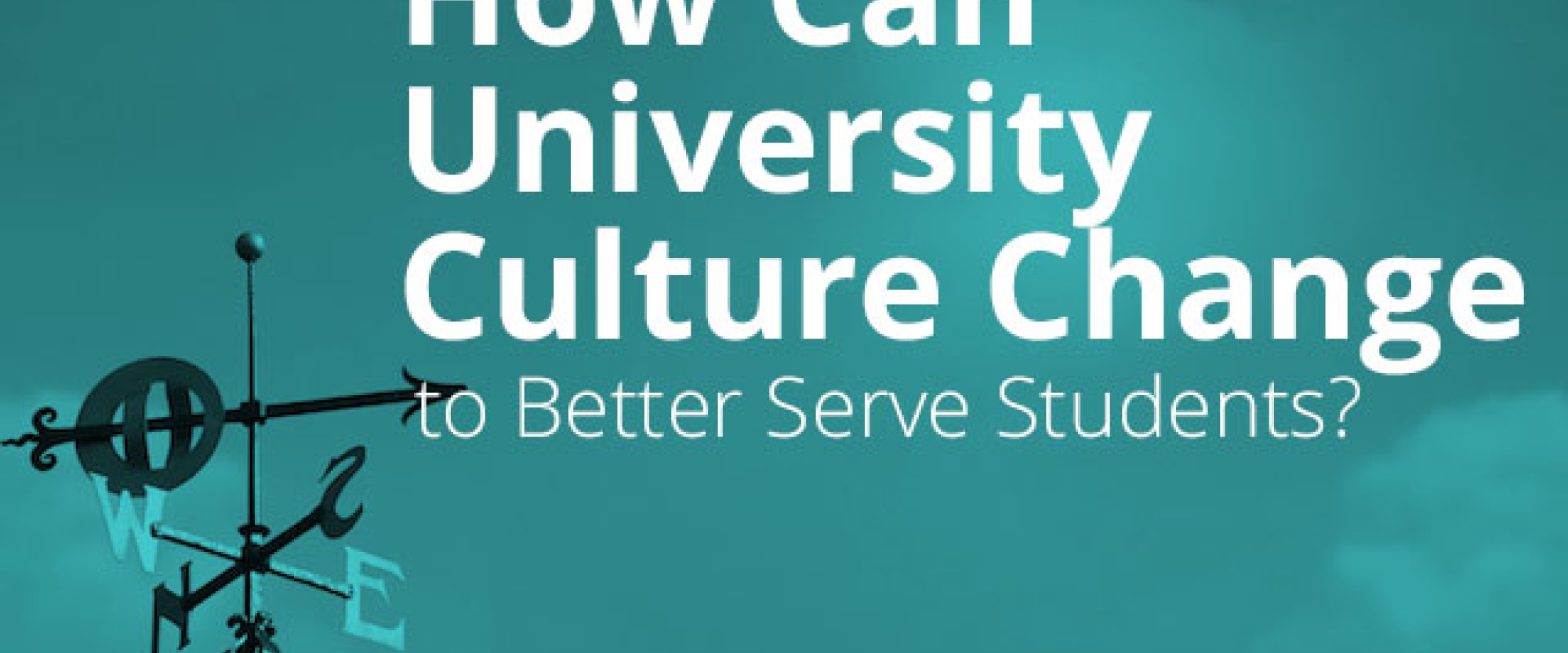For low income and first generation students, cost is often a barrier to college, but deeply entrenched cultural elements of the university experience can act as obstacles as well. How are innovative higher ed leaders shaking things up and which new values are they embracing?
Instead of weed out culture, retention.
Harvard Law’s competitive culture gave rise to a legend that became representative of universities at large. The tale is of one particular dean who would tell first year students, "Look to your left, look to your right. One of you won't be here by the end of the year." The story may be somewhat apocryphal, but the harshly Darwinian perspective it represents is not. Weed out culture can sometimes attach a certain amount of cache to student attrition. As more first generation students enter college, however, institutions are facing more scrutiny about their commitment to student success and competition for students among universities is surging. Look to your left, look to your right. The institutions that make student progression and graduation a core part of their mission will be the ones that survive.
Instead of the ivory tower, strong partnerships.
Over 80% of community college students want to go on to earn a bachelor’s degree, but only 17% end up doing so.1 Groundbreaking initiatives like the University of Central Florida’s DirectConnect program are changing that. The goal of the program is to smooth pathways from community colleges to the UCF campus and improve four-year degree attainment among low-income and minority students. To do that, the university formed tight partnerships with five community colleges and placed their own advisors there. These advisors help students stay on track and take a very hands-on approach to helping them with with the transfer process. To date, more than than 37,000 students have enrolled at UCF through DirectConnect and 71% of all participating students graduate within 6 years of arriving.
Instead of hustling for more enrollment, investing in student success.
When students drop out of college, universities typically have to go out and drum up additional enrollment. By contrast, Georgia State University is making strategic investments to support existing students, thereby preventing such a scramble from having to happen in the first place. The university initially put $1.8 million into an analytics, for instance, as well as an intensive advising program that would allow them to identify at risk students early and intervene. This is a key part of how GSU doubled its graduation rates in seven years and eliminated the achievement gap between students of different racial and ethnic backgrounds — even as the student body became larger and more diverse. Strategic investments aimed at reducing attrition can pay for themselves in the form of long term financial sustainability for universities. In fact, it’s estimated that every 1% gain in retention brings back $3 million to the campus.
1 http://ccrc.tc.columbia.edu/media/k2/attachments/what-we-know-about-tran...

